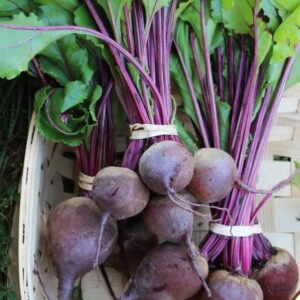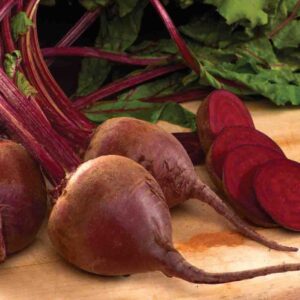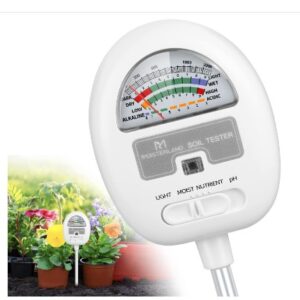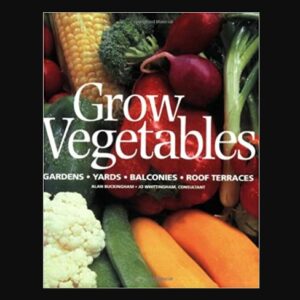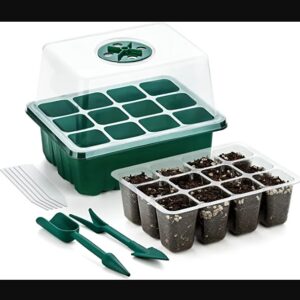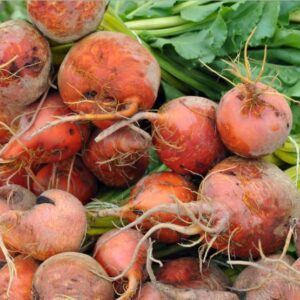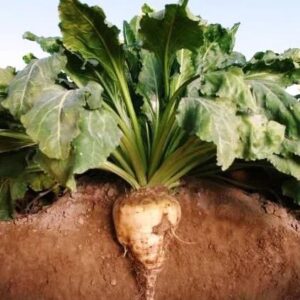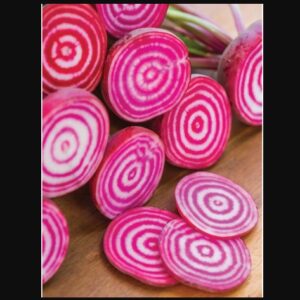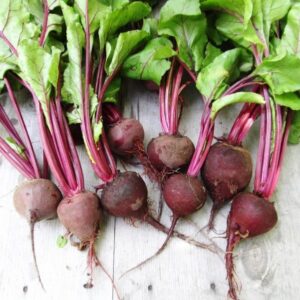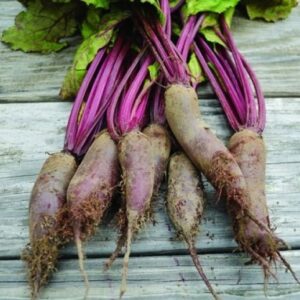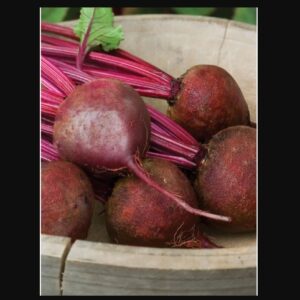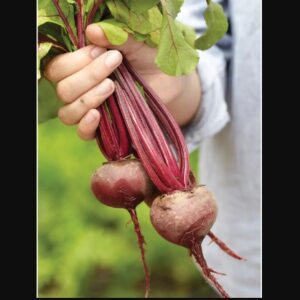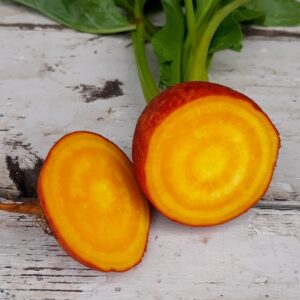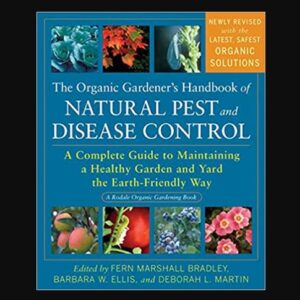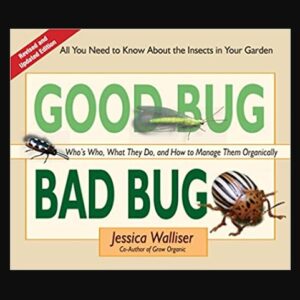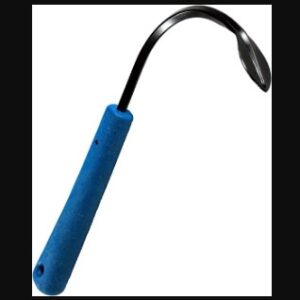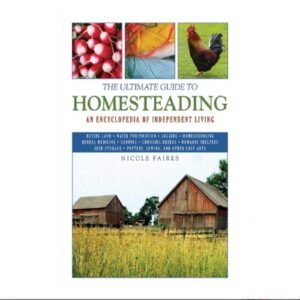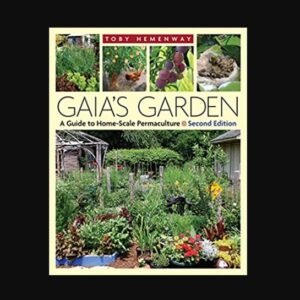How to Grow Beets from Seed at Your Homestead
Last Updated: June 14, 2023
Beets (Beta vulgaris) are an easy-to-grow and versatile vegetable. Beets are part of the Chenopodiaceae family. Grown for its roots and leaves, the beet has been a long time staple for human and livestock consumption.
This article will cover the following topics:
Disclosure of Material Connection: Some of the links in this page or post may be “affiliate links”. This means that if you click on the link, Pioneer Mountain Homestead, LLC may receive an affiliate commission at no direct cost to you. Pioneer Mountain Homestead, LLC only recommends products or services that the owners, managers, or employees of Pioneer Mountain Homestead, LLC use or believe will add value to the readers of this website. This disclosure is made with the Federal Trade Commission’s 16 CFR, Part 255: “Guides Concerning the Use of Endorsements and Testimonials in Advertising.”
General Information About Beets
| Germination temperature needed for seeds: | Seeds will germinate between 50 and 85 degrees Fahrenheit. Optimal temperature is 70 to 80 degrees Fahrenheit. |
| Germination in Days for seeds: | 5 to 21 days |
| Seed Viability: | 5 years |
| Expected seed germination: | Approximately 60%+ |
| Time to grow a seed to transplant: | 3 to 4 weeks |
| When to plant transplants: | Last frost date |
| Desired growing temperature: | 45 to 75 degrees Fahrenheit. Optimal growing temperature is 60-70 degrees Fahrenheit. |
| Average Number of Plants Needed per person per year: | 10-25 |
| Yield per Plant: | 8 ounces |
| Plants per square foot: | 12 |
| When to direct seed: | Last frost day |
| Fall Planting: | Mid summer |
| Days to Harvest: | 50-100 days |
| Life Cycle: | Biennial |
| Soil pH: | 5.8 to 8.0; 6.5 is considered ideal. |
| Companion plants: | Bush bean, cabbage family, corn, leek, lettuce, lima bean, onion, and radish. |
| Adversary plants: | Field mustard and pole beans. |
| Rotation considerations: | Do not follow potatoes. |
Planting Beets and Requirements of Beets
Beets prefer a soil pH between 6.0 and 8.0 with an optimal pH of 6.5. Ideal soil for beets is fertile, sandy, loose, and well drained. Adding 2” of compost or aged manure to the top of the beet planting bed will help the beets tremendously. Do not over fertilize with nitrogen. Nitrogen will encourage leaf growth and deter sugar storage. Beets like phosphorus (we use bone meal) and potassium (we use green sand, but wood ashes can also be used). Use only moderate amounts of phosphorus and potassium. Boron is great for beets as well (use kelp meal).
Beets prefer to grow in full sun and can grow to maturity in about 50 to 80 days. Since they are a fast growing crop, try to plant more seeds every three to four weeks so you get a harvest for a longer period of time. Optimal temperature for growing beets is 60 to 70 degrees Fahrenheit during the day with cool nights. In my area of Pennsylvania, beets grow best in the Spring and Fall when these conditions are most likely to occur. I start my first beets about 3 weeks before the last frost. My second crop is started in early August.
Beets do not compete well, so keep beds weeded. Beets can be mulched to aid in reducing weeds. Additionally, keep the beets well watered so the roots develop fully. The soil should remain moist throughout the growing season for the best harvest. If the tops of the beets begin to expose themselves, earth up around them or add mulch. Tops of beets that are exposed are prone to cracking.
Planting Beets by Seed
Direct sow beet seeds about ¼” to ½” deep in rows about 2” apart. You can also broadcast seed so the seeds are about 2” apart. If you broadcast seed, cover the seeds with a thin layer of soil or compost. The soil needs to be 50 degrees Fahrenheit for good germination. If you have poor quality soil, spacing will need to be greater and in the poorest of soils, beets should be spaced 5” apart.
Because the beet “seed” is actually a cluster of seeds, thinning will need to be done throughout the season so only one beet grows in each space. Thin leaving the best plant spaced about every 2 to 3 inches. To thin, just clip the plant at the soil level leaving the strongest plants in place. Do not pull the plants to thin as this will disturb the roots of the neighboring plants.
Planting Beets by Transplants
Beets can be started inside at 3 to 4 weeks before the last frost and planted outside after the first frost. However, I see no advantage to this as you can also start them directly in the ground at the same time. If you do decide to transplant, use a cell starting system as the beets do not like their roots disturbed. I have tried transplanting and I thought the roots seemed misshapen. I believe this was from disturbing the root in the transplant planting.
One other consideration when transplanting is ensuring that you don’t plant the beets outside too early or the beets may vernalize. If the stems of the transplant are larger than ¼” and they are exposed to temperatures below 50 degrees Fahrenheit for two weeks, the plant will believe it has gone through the winter season and it will bolt with the first warm weather. When bolting occurs the plant is on to its final destiny which is flowers and seeds.
Additionally when transplanting, only leave the nicest plant. The “seed” you planted is actually a cluster of seeds so if more than one plant emerges, keep only the nicest of the plants.
Main Varieties of Beets
Before choosing your beet seed, find your U. S. Hardiness Zone. You can follow this link: https://planthardiness.ars.usda.gov/
Most beets are open pollinated. There are three main types of beets: Long (cylindrical), Medium (Semiglobe), and Short (Globe). Beets range in sugar content from 5 to 14%. Some of the most common varieties of beet seeds include:
Albino White. Matures in 50 days. A mild white colored beet.
Big Top. Mainly grown for the greens.
Bulls Blood. Bulls Blood beets have deep red leaves. It is a popular choice for those using beet leaves for salad greens. Harvest the greens in 35 days. Harvest the roots in 50 days. Bulls Blood is an heirloom variety.
Burpees Golden. A sweet variety with genetics from the sugar beet.
Chioggia. This is an Italian heirloom seed. It has white and red striations. Matures in 50 days.
Crosby’s Egyptian. Matures in about 56-60 days. An open-pollinated heirloom variety developed in Massachusetts in the 1880’s. The beet root is round, sweet, and rich in flavor.
Cylindra. Cylindra beets are long (about 8” roots) and easy to slice. Cylindra beets mature in 50 to 70 days. Cylindra beets need deep soil.
Cyndor. A specialty beet variety.
Detroit Dark Red. One of the most common beet varieties and a favorite at our homestead. Matures in about 60-65 days. Detroit Dark Red beets are an heirloom variety. Detroit Dark Red beets are a good choice for canning and pickling. This variety also has very good greens.
Early Wonder. Matures in about 50-60 days. Early Wonder is a good choice for greens.
Formanova. Formanova is a cylindrical beet grown for both its tops and roots.
Forona. A specialty beet variety.
Gladiator. A miniature beet variety.
Golden Beet. A specialty beet variety. Matures in 50-55 days. Beet is a golden color. Both the greens and root are good to eat. Golden beets have a lower germination rate than other varieties so sow heavily.
Green Top Bunching. A beet that is grown for greens.
Kleine Bol (Little Ball). A miniature beet variety. A fast growing beet that matures in 50 days.
Lutz Green Leaf. Matures in 70 days. An open pollinated variety with good yields and good storage ability. Reported to have high amounts of Vitamins A and C. Also grown for the leaves.
Moneta. Reported as a great variety for direct seeding.
Monogerm. Monogerm beets have one seed per capsule.
Pablo. A miniature beet variety.
Pronto Heirloom Dutch. A baby beet with a sweet taste.
Red Ace. Matures in 52-53 days. This is a hybrid beet grown in North America. Red Ace is a very sweet beet and considered a main-crop beet variety. Red Ace reportedly keeps well in storage.
Scarlet Supreme. A main-crop beet variety.
Spinel. A miniature beet variety.
Touchstone Gold. A golden-yellow colored beet.
Winter Keeper. Matures in about 80 days.
Pests and Diseases of Beets
Often beets that are affected by pests or diseases are lacking in nutrition. Beets are susceptible to deficiencies in calcium, phosphorus, potassium, nitrogen, and boron.
Beet leafhopper. Also known as White Fly. Can produce up to three generations per year. Typically seen west of Missouri and Illinois, but not in the coastal areas. The beet leafhopper spreads curly top virus. The virus is characterized by raised leaf veins, stunted plants, and small, wartlike bumps on the undersides of the leaves. Leaves may become white, yellow, curled and brittle.
The leafhopper is a small (¼” to 1/3”) yellow-green slender bug that will suck juices from the leaves and stems. The nymphs move sideways and also suck juices from the plant. Eggs are laid on the undersides of the leaves. Use row covers to avoid the leafhopper.
Cercospora Leaf Spot. Leaf spot is caused by the fungus Cercospora beticola. Symptoms include ¼” brownish spots with reddish-purple borders on the leaves and the stems. Later the spots become gray with brown borders. The spots then develop fruiting bodies. Leaves will become yellow and will die and drop off. Control of leaf spot is by rotational planting of three plus years. Plow under or remove infected plants.
Downy Mildew. Fungal disease typically seen during wet weather.
Earwig. Earwigs typically only affect the seedlings.
Leaf Miners. Leaf miners can ruin the leafy greens. If you are not growing for the salad greens, this may not be a significant problem unless it gets out of hand. Try using row covers to prevent leaf miners. Rotational planting helps with controlling leaf miners.
Scab. Scab is typically a problem if beets are grown with or beside potatoes. It is a bacterial disease. Prevent by not growing beets in the same soil after growing potatoes.
Spinach Flea Beetles. Rotational planting and healthy soil helps with controlling flea beetles.
Other Pests and Diseases: Aphids, Caterpillars, Carrot Weevil, Garden Web Worm, Mite, Wireworm, and Rust can also affect beets.
Harvesting Beets
At about 60 days you can usually harvest the first beets. Beets should have a root ball of at least 1-1/2” before harvesting. Beets can be harvested up to about 4 inches wide. Anything wider is usually not as tasty with a woody texture. I find the best beets are in the two to three inch range. Small beets do not necessarily equate to sweet beets, so I hold off harvesting until at least 2” in width.
Pull the entire beet from the ground. If the greens are tender, use them in salads or saute them. If you are going to put the beet roots in a root cellar, cut the greens one inch above the top of the root. If you cut the greens too close, the root will bleed and can get rot. If you leave the greens too long, there’s a chance of drying out.
How to Store Beets
Beets can be stored in a plastic bag in the refrigerator for several weeks. For long term storage, place the beets in damp sand or sawdust in a root cellar or other area where the temperature has a constant range of 32 to 40 degrees Fahrenheit. (Most sources list sand as the preferred medium for storage of beets). Beets like humidity so aim for 90%. Beets store for four to six months.
You can also store beet roots either by canning in a pressure canner or pickling them and using a water bath canner. Beets can also be frozen or dried.
How to Save Beet Seeds
Beet seeds are interesting in that each “seed” is actually a cluster of flowers that are stuck together. Each flower has a seed. Each cluster averages between two and six seeds.
Beets are cross-pollinated by the wind and they need to be separated from other varieties by two miles and they cannot be near chard. They are biennials that need to be overwintered with extra mulch, or in extreme climates, removed and replanted in the following season. Beets can get as tall at eight feed when going to seed.
Once the beets have flowered and formed seeds, cut the stalks and hang in the shade until dry. Then, rub the seeds out by hand.
Beet Nutrition
Beet leaves contain large amounts of vitamins A and C. They also contain calcium, phosphorus, potassium, and iron. It should be noted that beet leaves also contain oxalic acid.
The roots are a rich source of carbohydrates. The roots also contain phytochemicals such as folate, betacyanin and betaine.
In a ½ cup of cooked beet root there are 50 units of vitamin A; 0.041 milligrams of vitamin B1; 0.037 milligrams of vitamin B2; 8 milligrams of vitamin C; 28 milligrams of calcium; 42 milligrams of phosphorus; 2.8 milligrams of iron; 2 grams of protein; and 40 calories.
In a ½ cup of cooked beet greens there are 22,000 units of vitamin A; 0.100 milligrams of vitamin B1; 0.500 milligrams of vitamin B2; 50 milligrams of vitamin C; 94 milligrams of calcium; 40 milligrams of phosphorus; 3.2 milligrams of iron; 2 grams of protein; and 28 calories.
Feeding Animals Beets
Beets can be stored as additional feed for goats through the winter or feed fresh from the garden. We often cut the beets into manageable pieces for the goats to eat. We only use beets as a supplement, not a main feed. I have found that feeding beets to thin animals during the winter can aid in putting weight on the animal.
Commercial products are made from beets for feeding ruminants (sheep, goats, cervids, and new world camelids). Beet pulp is dried and either shredded or pelleted to supplement livestock feed. Silage can be made from the aerial portions of the plant.
Conclusion
Beets are one of the easiest vegetables to grow and they provide nutrition to humans and ruminants in both the leaves and the roots making them a perfect vegetable in my opinion. With all the varieties available, there is sure to be one that will add some new flavors to your meals. As a bonus, multiple crops can be grown each season. Hopefully you are inspired to try growing some beets. Happy gardening!
Sources of Information:
Caldwell, Gianaclis. Holistic Goat Care. Chelsea Green Publishing, White River, Vermont. 2017. ISBN: 978-1-60358-630-6
Denckla, Tanya L. K. The Gardener’s A-Z Guide to Growing Organic Food. Storey Publishing, US. 2003. ISBN: 13: 978-1-58017-370-4 ISBN: 10: 1-58017-370-5
Fortier, Jean-Martin. The Market Gardener. New Society Publishers, Canada. 2014. ISBN: 978-0-86571-765-7
Jabbour, Niki. Year-Round Vegetable Gardener. Storey Publishing, US. 2011. ISBN: 978-1-60342-568-1
National Research Council. Nutrient Requirements of Small Ruminants. The National Academies Press, Washington D. C. 2007. ISBN: 978-0-309-47323-1 ISBN: 0-309-47323-3
Rodale, J. I. and staff. How to Grow Vegetables & Fruits by the Organic Method. Rodale Books, Inc., Emmaus, PA. 1961, renewed 1999. ISBN: 0-87596-842-2
Smith, Edward C. The Vegetable Gardener’s Bible. Storey Publishing, US. 2000. ISBN: 978-1-58017-212-7
Tozer, Frank. The Vegetable Growers Handbook. Green Man Publishing, Santa Cruz, Felton, CA. 2008. ISBN: 978-0-9773489-3-0
Weaver, William Woys. 100 Vegetables and Where They Came From. Algonquin Books of Chapel Hill, Chapel Hill, North Carolina. 2000. ISBN: 1-56512-238-0
#pioneermountainhomestead #pmhomestead #raystown #pennsylvania #raystownfarm #homesteader #homestead #diy #homesteading #garden #gardening #gardener #farm #farmer #farming #beets #plantbeets #beet #beetgarden
About the Author:
Hi. I’m Bren at Pioneer Mountain Homestead. My husband and I are full-time homesteaders in the Appalachian Mountains of south-central Pennsylvania. We have a sawmill, produce garden, honeybees, layer hens, laying ducks, pigs, and goats. Additionally, we provide boat and camper storage to nearby visitors of Raystown Lake and sell firewood and lumber. Our journey is to be as self-reliant as we can be; to live as much as we can from the resources we have at hand; to effectively be productive with as minimal environmental impact as possible; to raise food in an organic manner; and to give back to our community through education or demonstration. We are always learning, as well. Life is always an adventure! We enjoy learning from others and seeing what other people are doing as well.
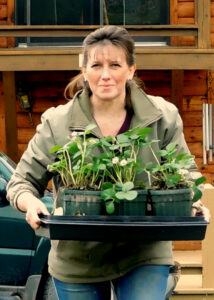
Disclaimer: Pioneer Mountain Homestead blogs and videos are for entertainment purposes only. Please use good judgement and do your own research. Our writings and videos represent our opinions and procedures. We assume no liability for actions taken in conjunction with our blogs and videos.
Disclosure of Material Connection: Some of the links in this page or post may be “affiliate links”. This means that if you click on the link, Pioneer Mountain Homestead, LLC may receive an affiliate commission at no direct cost to you. Pioneer Mountain Homestead, LLC only recommends products or services that the owners, managers, or employees of Pioneer Mountain Homestead, LLC use or believe will add value to the readers of this website. This disclosure is made with the Federal Trade Commission’s 16 CFR, Part 255: “Guides Concerning the Use of Endorsements and Testimonials in Advertising.”
